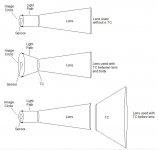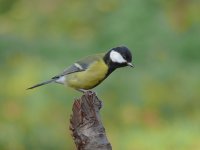RJM
Don't Worry, Be Happy!
Hey, I am always willing to be schooled by those who can teach. You failed to give me a valid test to consider in support of your theory.
FWIW, I understand camera lens aperture is determined by the diaphram opening at the REAR of the lens assembly, not the size of the objective. In the case of the FX28 the diaphram opening will never be larger than 20mm (fl86.4mm/F4.4= 19.6) at the telephoto end (and always less than 2mm at the wide end!).
There can be many optical reasons why the TCON is big, but I don't think "passing more light" to compensate for a 1.7x increase in focal length is one of them.
Rick
FWIW, I understand camera lens aperture is determined by the diaphram opening at the REAR of the lens assembly, not the size of the objective. In the case of the FX28 the diaphram opening will never be larger than 20mm (fl86.4mm/F4.4= 19.6) at the telephoto end (and always less than 2mm at the wide end!).
There can be many optical reasons why the TCON is big, but I don't think "passing more light" to compensate for a 1.7x increase in focal length is one of them.
Rick








